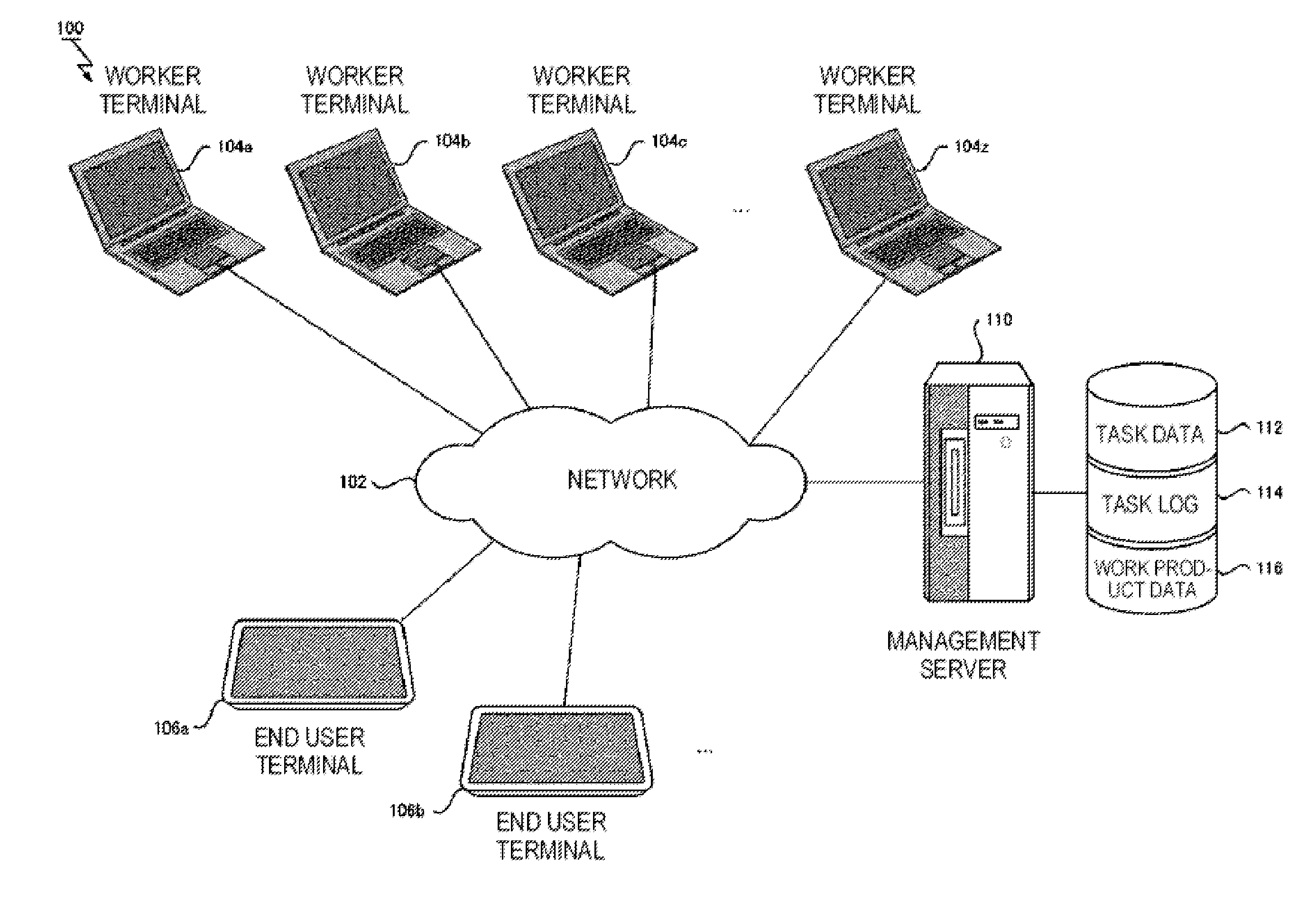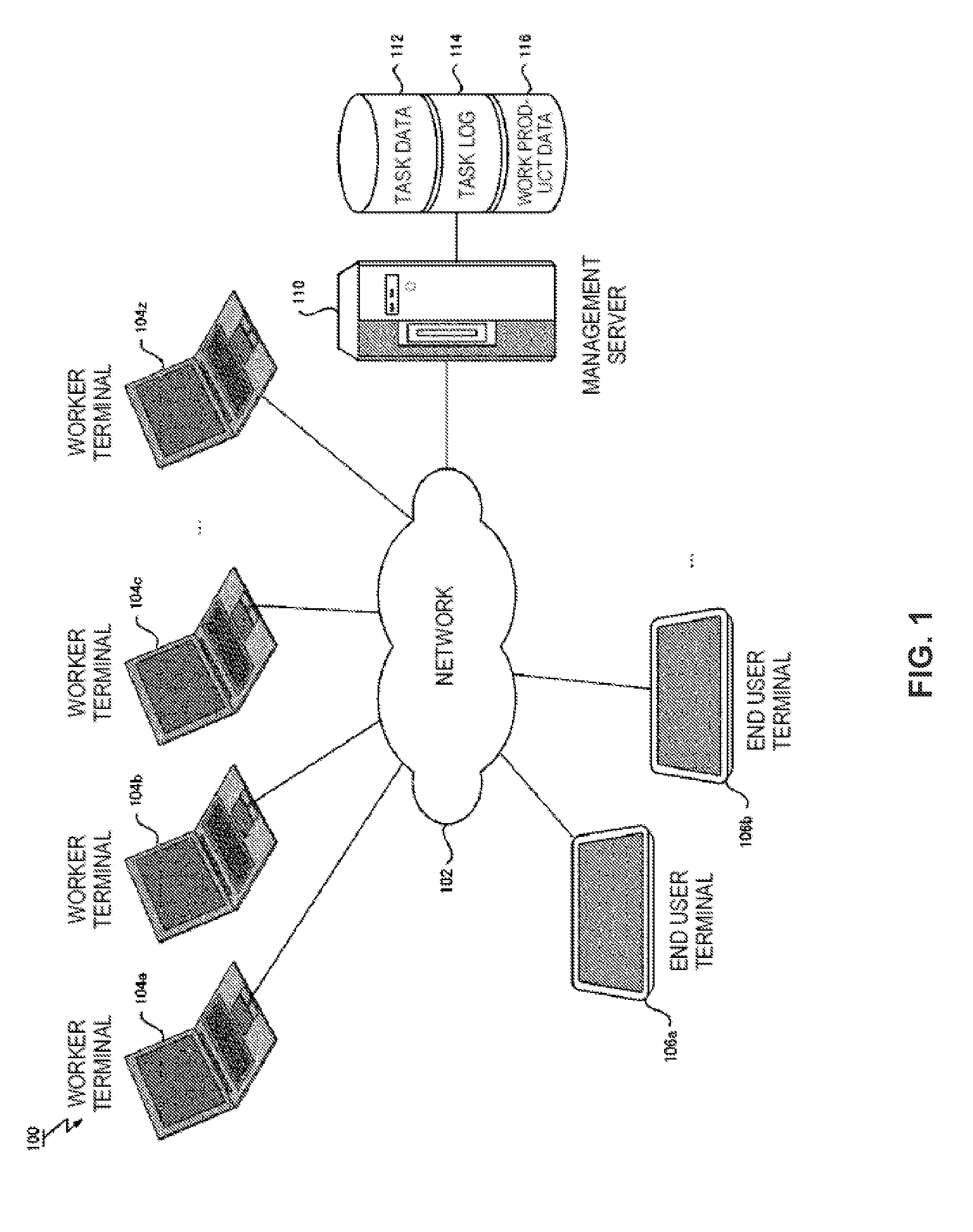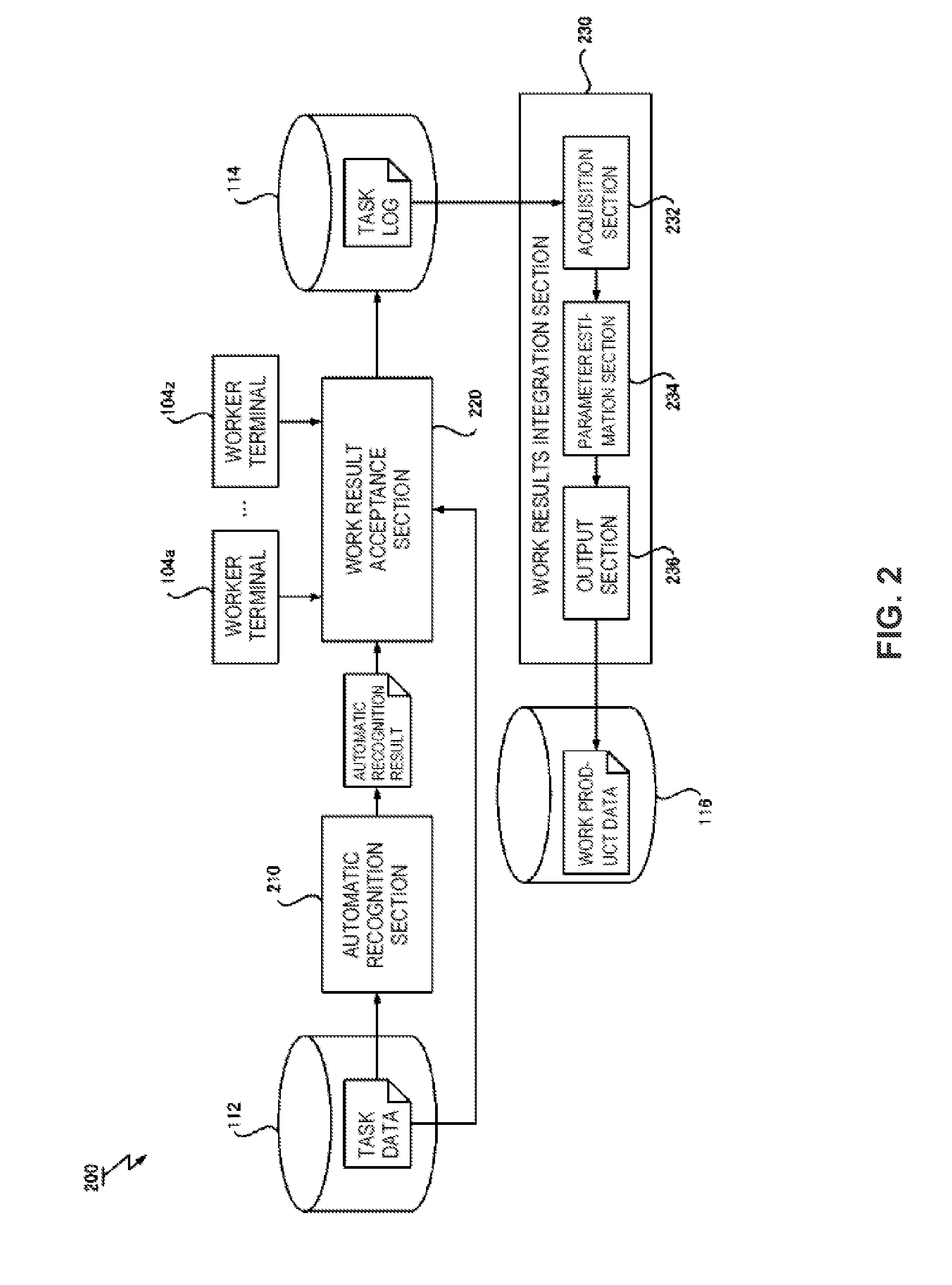Skill estimation method in machine-human hybrid crowdsourcing
a technology of hybrid crowdsourcing and skill estimation, applied in the field of process for integrating the results of works, can solve the problems of insufficient compatibility of the technique with the step-by-step workflow, the tendency of being suspicious and excessively modifying even correct recognition,
- Summary
- Abstract
- Description
- Claims
- Application Information
AI Technical Summary
Benefits of technology
Problems solved by technology
Method used
Image
Examples
experiment example 1
[0102]A management server 110 implemented with the parameter estimation method shown in FIG. 5 was constructed with a personal computer. The parameter estimation process was executed for the task logs described above with the use of the generative model shown in FIG. 4 in which the correct answer rates αi and βi for each worker are introduced as parameters, and the accuracy of estimated answers corresponding to a known true correct answer was evaluated. The accuracy was calculated by counting the number of times of an estimated answer corresponding to a true correct answer and dividing the number of times by a sum total of tasks n. When this calculation was performed for all the tasks for the experiment example 1, the accuracy was 0.9691. Furthermore, when tasks for which different answers had been obtained from the workers were extracted, and the accuracy was calculated for 2.344 such tasks extracted from among the total of 39,176 tasks, the accuracy was 0.7509. FIG. 7 shows the ac...
experiment example 2
[0103]A management server 110 was constructed with the same computer as the experiment example 1, the management server 110 being implemented with the same parameter estimation method as the experiment example 1 except for a point that the correct answer rates of the workers were uniform, that is, worker-independent correct answer rates α and β were used as parameters. The parameter estimation method was executed for the task logs described above to calculate accuracy. The accuracy of all the tasks was 0.9664. When accuracy was determined for the same set of the tasks as the experiment example 1 for which different answers had been obtained from the workers, the accuracy was 0.7108. FIG. 7 shows the accuracy determined for the set of the tasks for which different answers had been obtained from the workers in the experiment example 2. The experiment example 2 constitutes an implementation example.
experiment example 3
[0104]A management server 110 was constructed with the same computer as the experiment example 1, the management server 110 being implemented with the same parameter estimation method as the experiment example 1 except for a point that conditioning by whether or not an OCR recognition result had been correct was not performed, but one kind of correct answer rate si=p (yit=zt) for each worker was introduced as a parameter. This corresponds to what is obtained by a simplified latent class model (LC). Further, although a recognition result of the OCR engine can be also considered as an answer by a worker in such a model, the OCR engine was not included in the workers, and only results by the human workers were integrated in the experiment example 3. The parameter estimation method was executed for the task logs described above, and accuracy was determined for the same set of the tasks as the experiment example 1 for which different answers had been obtained from the workers. FIG. 7 sho...
PUM
 Login to View More
Login to View More Abstract
Description
Claims
Application Information
 Login to View More
Login to View More - R&D
- Intellectual Property
- Life Sciences
- Materials
- Tech Scout
- Unparalleled Data Quality
- Higher Quality Content
- 60% Fewer Hallucinations
Browse by: Latest US Patents, China's latest patents, Technical Efficacy Thesaurus, Application Domain, Technology Topic, Popular Technical Reports.
© 2025 PatSnap. All rights reserved.Legal|Privacy policy|Modern Slavery Act Transparency Statement|Sitemap|About US| Contact US: help@patsnap.com



